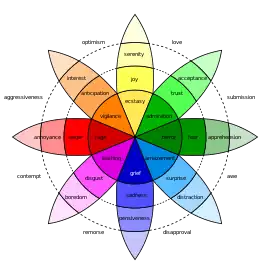Schadenfreude
Schadenfreude comes from the German word by the same name. It literally translates to harm joy. It is the happiness that somebody gets when somebody else is hurt. Psychologists theorize that there are three causes for this emotion.[1] Aggression, rivalry, or justice. Aggression-based schadenfreude happens because seeing someone else's group fail makes them feel better about themselves. Rivalry-based schadenfreude happens because seeing someone else fail makes them feel better about themselves. These may seem similar, but the difference is in that aggression is related to in-group and out-group identities, and rivalry is based on individuals. The last form is justice-based schadenfreude. This happens because people feel happy that someone bad is being punished. They feel good that the bad person is getting what they deserve.
Related pages
- Self-esteem
- Tall poppy syndrome
- Jealousy
- Sadism
- Revenge
References
- The Think Big Manifesto. Hoboken, NJ, USA: John Wiley & Sons, Inc. 2011-11-15. pp. 163–166. doi:10.1002/9781118257982.ch6. ISBN 978-1-118-25798-2.


